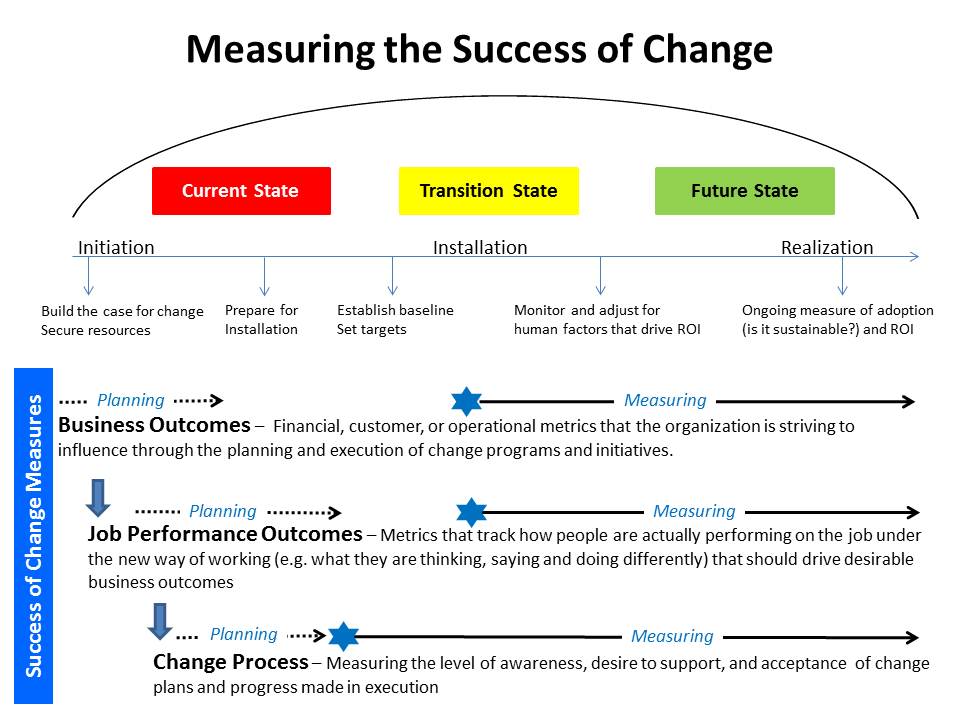
To determine the success of organizational changes, we need both outcome and process measures. Outcome measures help us understand what we’ve achieved. Process measures help us understand how our activities and efforts are unfolding and being received by others. The graphic below depicts the types of outcome and process measures that change leaders can help others define.
Two types of outcome measures are of key importance to those leading change efforts:
- Business outcomes (financial, customer, and operational measures), and
- Job performance outcomes (how individuals and teams are performing to drive desirable business outcomes)
Job performance is not an end state in and of itself. Organizations care about job performance because it should result in an improvement in operations, in customer behavior (e.g. sales, retention, etc) and ultimately, in achieving financial objectives. However, because job performance is a huge driver of achieving any type of success in organizational life, especially during change and transition, we will treat it as a special type of outcome measure, distinct from financial, operational and customer measures, for the purposes of this discussion.
Measuring how a change is unfolding (change process measures) provides key data to change leaders to better understand what adjustments to make to the change plan, and what issues need to be resolved to fully adopt the new solution. Measuring the change process may include gathering data on:
- The level of awareness, desire to support, and acceptance of the change
- The perception of progress made towards implementing a change
- The perception of how sustainable a change will be in the long term, through the identification of outstanding issues, unintended consequences, or impacted groups
Gauging how a group feels about how a change is unfolding is extremely important. It should not be considered as a way to determine just how to make people feel better about what is transpiring. Rather, change leaders can use process data to dig deeper and look for clues or early warning signs of problems or challenges that can impede adoption.
In the model of change depicted above, the first measures that should need to be established are business outcome measures. These must be tied closely to the business case and reason for change. As the project unfolds, the nature of what the change means and the impacts it will create at the business unit, subunit and individual performer level will provide data to create job performance measures. Finally, as both business outcomes and desired job performance become clearer, change plans can get created, and change leaders can plan how they will track and monitor the success of the change process over time.

Leave a Reply